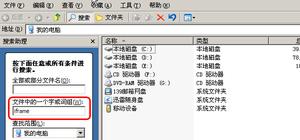在Linux中使用C / C ++获取机器序列号和CPU ID
如何在Linux系统中获取机器序列号和CPU ID?
示例代码受到高度赞赏。
回答:
这是Linux内核似乎使用的内容:
static inline void native_cpuid(unsigned int *eax, unsigned int *ebx, unsigned int *ecx, unsigned int *edx)
{
/* ecx is often an input as well as an output. */
asm volatile("cpuid"
: "=a" (*eax),
"=b" (*ebx),
"=c" (*ecx),
"=d" (*edx)
: "0" (*eax), "2" (*ecx));
}
然后可以将其用作例如:
#include <stdio.h>int main(int argc, char **argv)
{
unsigned eax, ebx, ecx, edx;
eax = 1; /* processor info and feature bits */
native_cpuid(&eax, &ebx, &ecx, &edx);
printf("stepping %d\n", eax & 0xF);
printf("model %d\n", (eax >> 4) & 0xF);
printf("family %d\n", (eax >> 8) & 0xF);
printf("processor type %d\n", (eax >> 12) & 0x3);
printf("extended model %d\n", (eax >> 16) & 0xF);
printf("extended family %d\n", (eax >> 20) & 0xFF);
/* EDIT */
eax = 3; /* processor serial number */
native_cpuid(&eax, &ebx, &ecx, &edx);
/** see the CPUID Wikipedia article on which models return the serial
number in which registers. The example here is for
Pentium III */
printf("serial number 0x%08x%08x\n", edx, ecx);
}
这篇Wikipedia文章中有关如何使用该CPUID指令的很好参考。
Wikipedia文章说,序列号是随Pentium
III一起引入的,但是由于隐私问题,以后的型号中不再使用该序列号。在Linux系统上,您可以通过执行以下操作检查此功能(PSN位)是否存在:
grep -i --color psn /proc/cpuinfo如果未显示任何内容,则您的系统不支持处理器序列号。
以上是 在Linux中使用C / C ++获取机器序列号和CPU ID 的全部内容, 来源链接: utcz.com/qa/435077.html






